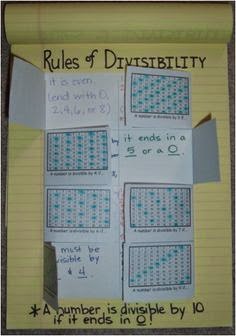We began the unit by learning about patterns. Students explored patterns and came up with their own patterns. They also had to be able to come up with a rule when given a pattern. For example, if given the following pattern: 4, 9, 7, 12, 10, 15, 13, students would have to determine that the rule is add 5 then subtract 2.
Next students learned about factors and multiples. Below you will find the definitions and examples for each of these!
A factor is a number that is multiplied by another number to get a product. In the example below, 6 and 3 are factors.
6 x 3 =18
Below is an example of a poster that looks just like the one we have posted in the classroom to help students remember what a factor is!
A multiple is a number that is the product of given number and some other number. In the example below, 18 is a multiple.
6 x 3 = 18
Below is an example of a the poster that looks just like the one we have posted to help students remember what a multiple is!
Next students learned how to find factors and common factors. Students were taught to use a T chart like the one below to help them organize their thinking when finding factors & common factors of two numbers.
We began with the number 36. First, we organized our work in a t-chart, like the one shown below. Students write the number they are finding factors for (36) at the top of the chart. Next, we go through each single digit and decide if it's a factor or not. It sounds something like this:
Is 1 a factor? Yes. 1 and what? 1 and 36.
Is 2 a factor? Yes. How do you know? Because it's even. 2 and what? 2 and 18 (they divide if they don't know).
Is 3 a factor? Yes. 3 and what? 3 and 12.
Is 4 a factor? Yes. 4 and what? 4 and 9.
Is 5 a factor? No. How do you know? Because 36 doesn't have a 0 or 5 in the 1s place.
Is 6 a factor? Yes. 6 and what? 6 and 6.
Is 7 a factor? No. How do you know? 7 x 4 is 28 and 7 x 5 is 35.
Is 8 a factor? No. How do you know? 8 x 4 is 32 and 8 x 5 is 40.
Is 9 a factor? Yes, but we already have it on our list.
The t chart is also helpful for finding common factors of 2 different numbers. As you can see in the picture above, we used a Tchart to find all of the common factors of 12 and 24. First we found the factors of 12 and then the factors of 24. Then we circle all of the factors they have in common.
I also set up common factor workstations in our classroom. Students went around the room in teams with clip boards and found common factors of different numbers using the strategies that they learned in class. Below you will find pictures of the mathematicians at work!
Students were also taught to use a venn diagram to help them find common multiples of a number. Below is an example that we did together using a venn diagram to find common multiples of 3 and 6..we didn't get a chance to finish, but as you can see we could have continued!
Students also learned about divisibility. A number is divisible by another number if the quotient is a multiple or counting number and the remainder is 0. For example, 12 is divisible by 6, because 6 can divide evenly into 12 without a remainder. However 13 is not divisible by 6, because 13 can not be divided evenly by 6 without a remainder. Students explored divisibility with many different problem solving situations. As students solved problems, and we noticed that a number was divisible by another number, we added to our divisibility chart on the board. Students later used the patterns that they noticed on the chart to make a divisibility rule foldable in their notebook. For example, students noticed that if number had a 0 or 5 in the ones place then it was divisible by 5. Another example, students noticed that if a number had a 0, 2, 4, 6, or 8 in the ones place that the number was divisible by 2. Below you can find a picture of the divisibility chart on the board. It was so powerful for students to notice the patterns and come up with the rule on their own, rather than me just telling them! Students will be bringing home the divisibility rules chart in their notebook on Monday! You will find an example of students using the divisibility posters to find divisibility rules to add to their foldable!
Examples of divisibility rules foldable!
Students used square tiles and grid paper to determine that you could only arrange 13 tables in one way to make a rectangle, which is 1 row of 13. However, 12 tables could be arranged different ways! ( 1 row of 12, 2 rows of 6, 6 rows of 2, 3 rows of 4,and 4 rows of 3). From there, we discussed the difference between the 2 numbers. I told them that 12 is composite number and 13 is prime. Based on their observations from the problem of the day, they were able to determine their own definitions of prime and composite numbers! So valuable! See below....
















What about the #1 which is neither prime nor composite?
ReplyDelete